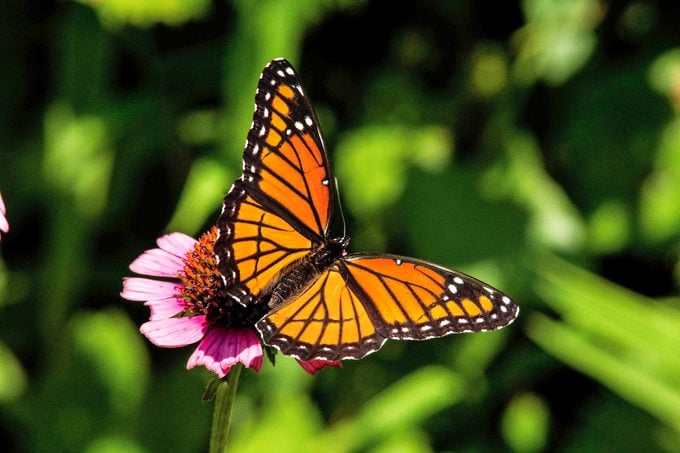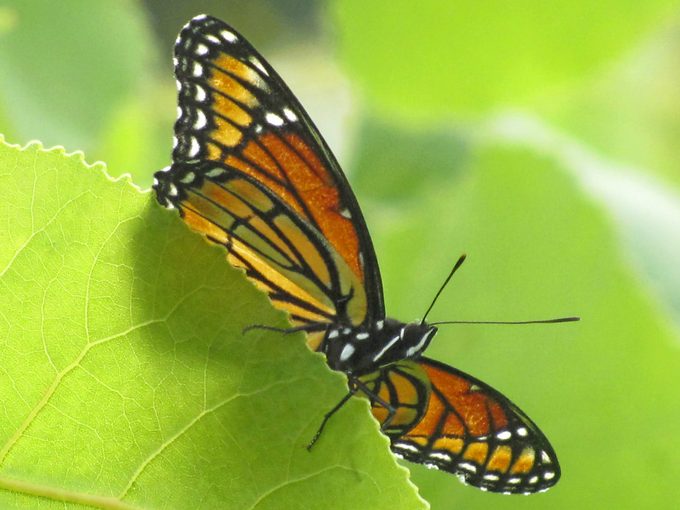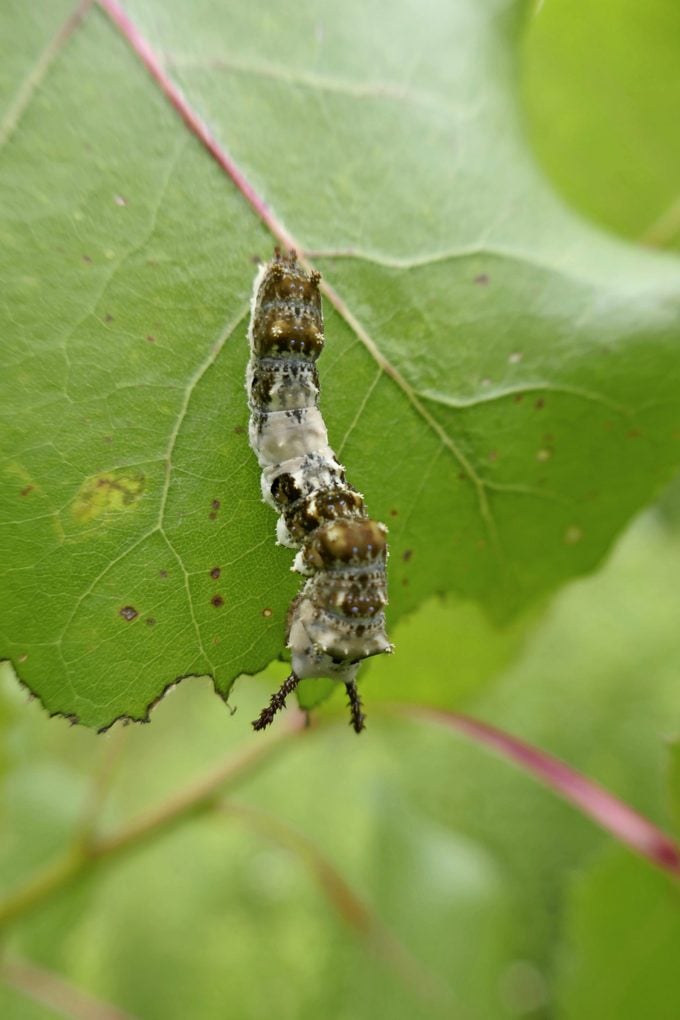Meet Garden Royalty: The Viceroy Butterfly
Updated: Apr. 18, 2022
A viceroy butterfly is a majestic sight in the garden. Learn what the butterflies and their caterpillars look like and how to attract them.
Viceroy Butterfly Markings

Only a few butterflies can be described as regal and the viceroy butterfly is certainly one of them. In fact, they look strikingly similar to another majestic butterfly: the monarch butterfly.
Just like monarchs, viceroy butterflies are orange all over with striking black markings. The most obvious difference is the viceroys’ black band that runs parallel to the outer wing. Adults can grow fairly large—they have a wingspan between 2 1/2- to 3 3/8-inches.
Learn the other differences between monarchs and viceroy butterflies.
Where to Find Viceroy Butterflies

These vibrant orange and black butterflies are widespread east of the Rocky Mountains, although there are a few localized populations west of the mountain range as well. Their ideal habitats include streams and the edges of woodlands. Learn about the White Peacock butterfly, which calls southeastern wetlands home.
The viceroy is fairly common in Kentucky, which named this stunner as its official state butterfly.
Look for a mourning cloak butterfly in early spring. Plus, here’s how to identify a red-spotted purple butterfly.
What Do Viceroy Butterflies Eat?
You can draw in viceroy butterflies with a variety of different foods. To attract them, start by growing a colorful pollinator garden. This means planting nectar-packed flowers that bloom during different parts of the growing season.
Or draw them in with a DIY puddling station. Male butterflies are attracted to the mud and silt. They use the puddling stations to collect valuable nutrients that they pass along to females and their young.
You can also attract butterflies with fruit such as bananas, oranges, strawberries and watermelon.
Check out beautiful butterfly pictures you HAVE to see.

Viceroy Caterpillar
The caterpillar is visually unappealing and described by the Alabama Butterfly Atlas as resembling “bird droppings in all stages” of development. Look for brown, green and creamy patches with antennae-like appendages.
Quiz: How many types of caterpillars can you identify?
Viceroy Host Plants and Eggs
Adults lay the eggs on different kinds of trees, so look for young caterpillars and the minuscule eggs on willows, poplars and cottonwoods. You can find the gray-green eggs on the tips of the leaves.




















